Post by Ghost' on Nov 19, 2008 3:53:17 GMT -5
The following are all the systems and planets present in the Franchise Wars galaxy.

1. The Lylat system:
1 star
10 planets:
Aquas
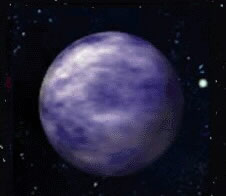
Aquas is one of two oceanic worlds of the Lylat System, the other being Zoness. The entire surface of Aquas is covered with water, and abounds with a diverse range of aquatic life. Though mostly harmless, some of Aquas' aquatic lifeforms can be extremely deadly even to modern submersible vehicles. Ruins similar to those found on Titania point towards an ancient civilization that no longer exists.
Civilisations must have some form of technology to build bases that compensate for there being no land on Aquas
Corneria
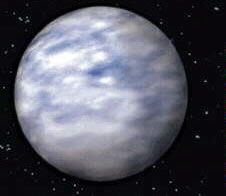
Cornaria is a fertile farming world with a variety of climates and terrains. Cornaria's weather patterns cause great caves to form underneath its mountains, which could be used to build greatly protected cities.
It is perfect for life, and easy to settle.
Fichina (cold, barren, supports life)

The cold, snow-swept world of Fichina is completely devoid of vegitation. While it can be settled, there is little here for anyone without terraforming tools.
Fortuna

Fortuna is a verdant rainforest planet. Perfect for life, the only concern about habitation is the native wildlife. The planets indigenous species share a great similarity with dinosaurs, and some of the larger ones may attack any landing parties or bases one in a while.
Katina
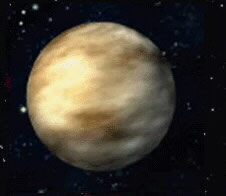
Katina is a semi-arid world. Despite containing less water than Corneria, Katina shares a similar climate and environment to its sister planet. It is easy to settle.
Macbeth
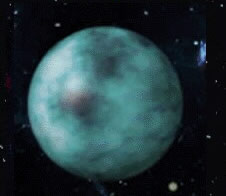
Macbeth is a mineral-rich planet. Supposedly hollow after a geological event shrunk its core, Macbeth is known for containing a wealth of rare minerals. It is easy to settle.
Titania
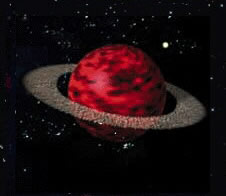
Titania is barren, desert world of crumbling ruins and sandy dunes. Titania is known as the "Red Planet" because of the massive ion storms that kick up dust from the planet's surface and deposit it into the stratosphere. A surprising amount of ancient ruins have been discovered on Titania by archaeologists, pointing to an advanced ancient civilization that once inhabited the planet.
Venom
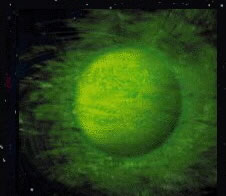
A harsh world on the periphery of the system, Venom is a cruel planet anathema to life. The atmosphere is practically unbreathable, with a barren surface broken by rough cliffs and chasms, while a vast acidic ocean kills off any attempt at life. Only the most powerful terraforming technology could hope to make venom habitable.
Zoness (oceanic)
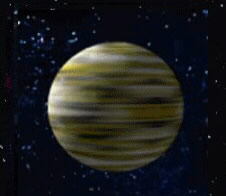
Zoness is one of two oceanic worlds of the Lylat System, the other being Aquas. Nearly covered with ocean, small groups of islands are the only ground that breaks above the crashing waves of Zoness. Zoness is home to a wide array of aquatic animals, including the dragon-like Todora, Troika fish, and Z-Gulls. While at some point in its history the water was heavily poluted, it seems to have recovered. Zoness is easy to settle.
1 asteroid belt
2. The solar system
INFORMATION IS INCOMPLETE- EXTRAPOLATION PENDING
3. The Kauruva system

VISUAL DATA OUTDATED- WARPSTORM NO LONGER ACTIVE
1 star
4 planets:
Kauruva 1:
A semi arid world sporting a large circular continent ringed by a vast ocean. Vegetation is sparse toward the centre of the continent, but increases the closer one gets to the coast.
easy to settle
Kauruva 2:
A forested world with a ecosystem similar to the planets Earth and corneria, Kauruva 2 is a fine planet for living. It is also host to the first two moons of the system, Kauruva Alpha and beta respectivly.
Easy to settle.
Kauruva 3:
The black sheep of the kauruva systems favourable planetary lineup. A desert world encompassed completely by orange-brown duststone, kauruva 3 is an inhospitible (yet bearable) planet for life. It sports little vegetation, frequent dust storms, and deep crevasses that line the planets rock surface. However, large ice chunks from the planets rings sometimes crash and produce short lived lagoons.
Despite being inhospitible, a civilisation could establish itself on Kauruva 3.
Kauruva 4:
Kauruva 4 shares much of its environment with its sister planet, Kauruva 2. However, quite a lot of the southern and western areas are very marsh. These boggy areas are host to a stange vine-like organism. While this strange vine creature is widespread in the marshlands, it is quite harmless. Kauruva 4 hosts the final moon in the system, Kauruva Gamma.
Easy to settle
Three habitable moons:
Kauruva Alpha:
A rocky planetoid with some vegitation, Kauruva alpha is basically a sparser version of its parent (Kauruva 2).
Easy to settle.
Kauruva Beta:
A rocky planet with several towering mounds of dark blue sedimentary stone, Kauruva Beta is basically a chunk of rock with an atmosphere.
Requires terraforming to create a sustainable colony/base.
Kauruva Gamma:
Gamma is thought to have formed from an off-shoot of Kauruva 3 falling into Kauruva 4's orbit. It has an atmoshere, and terrain virtually identical to the red deserts of Kauruva 3.
Despite being inhospitible, a civilisation could establish itself on Kauruva Gamma.
4. The Facade system
INFORMATION IS INCOMPLETE- EXTRAPOLATION PENDING
5. The simplicity system
1 star
6 planets
Aegis 7:
IMAGE FOUND IN FLOATING DEBRIS: SUBJECT UNKNOWN

A inhospitible wastland of a planet, Aegis 7's surface is riddled with jagged rocks and spike-like mountains. Its atmosphere is not breahable by any known lifeform, and is prone to fierce winds and duststorms.
A chunk of immense size appears to have been cut from the planet, though the planet has oddly remained stable despite the sudden loss of mass.
Strange signals have been picked up from the planet, though what they are or what is making them is unknown.
To inhabit Aegis 7 would require the inhabitants to have a self contained dome-city and breath-masks (or some other analouge), or perform a large scale terraforming operation.
Theroc:
VISUAL DATA UNAVAILABLE
A Forest planet with a few large circular lakes, Theroc seems to be the perfect place for sustaining a civilisation. Nearly every planet growing on theroc has a use. Prickle pears provide protien, World tree wood provides a sturdy but flexible material, and the fugus-nests of Theroc's strange insect life provide ready made dwelling places for inhabitants once the insects move out. Any race on Theroc will thrive of its near unlimited natural resourses.
The world trees of theroc are sentient, sharing a hive-mind like conciousness. Thier capabilities are at this point unknown. It appears as though an ancient bird-like race once lived on the planet, but all that remains of them is fragile fossils.
Theroc is perfect for life and easy to settle.
Rakata Prime

Known to the native tribes of Rakata as Lehon, Rakata Prime is a remote tropical world. Mostly oceanic, Rakata Primes land comes in the form of thousands of small islands and archipelagos. The only real terrestrial species on the planet are small birds, dwarf Rancor and the sentient Rakata.
The Rakata species is aphibious, and froglike in appearance. While they do use technology (Thier tribal areas are surrounded by a volatile electrice field) and display significant intellegence (they are able to tame the dwarf Rancor), they seem to not want to develop extensive technologies.
Rakata prime also has two rocky airless moons, one of which is very close to the planet. This moon can be seen in the day, and takes up a significant portion of the sky.
Easily inhabitable.
more later...

1. The Lylat system:
1 star
10 planets:
Aquas

Aquas is one of two oceanic worlds of the Lylat System, the other being Zoness. The entire surface of Aquas is covered with water, and abounds with a diverse range of aquatic life. Though mostly harmless, some of Aquas' aquatic lifeforms can be extremely deadly even to modern submersible vehicles. Ruins similar to those found on Titania point towards an ancient civilization that no longer exists.
Civilisations must have some form of technology to build bases that compensate for there being no land on Aquas
Corneria

Cornaria is a fertile farming world with a variety of climates and terrains. Cornaria's weather patterns cause great caves to form underneath its mountains, which could be used to build greatly protected cities.
It is perfect for life, and easy to settle.
Fichina (cold, barren, supports life)

The cold, snow-swept world of Fichina is completely devoid of vegitation. While it can be settled, there is little here for anyone without terraforming tools.
Fortuna
Fortuna is a verdant rainforest planet. Perfect for life, the only concern about habitation is the native wildlife. The planets indigenous species share a great similarity with dinosaurs, and some of the larger ones may attack any landing parties or bases one in a while.
Katina

Katina is a semi-arid world. Despite containing less water than Corneria, Katina shares a similar climate and environment to its sister planet. It is easy to settle.
Macbeth

Macbeth is a mineral-rich planet. Supposedly hollow after a geological event shrunk its core, Macbeth is known for containing a wealth of rare minerals. It is easy to settle.
Titania

Titania is barren, desert world of crumbling ruins and sandy dunes. Titania is known as the "Red Planet" because of the massive ion storms that kick up dust from the planet's surface and deposit it into the stratosphere. A surprising amount of ancient ruins have been discovered on Titania by archaeologists, pointing to an advanced ancient civilization that once inhabited the planet.
Venom

A harsh world on the periphery of the system, Venom is a cruel planet anathema to life. The atmosphere is practically unbreathable, with a barren surface broken by rough cliffs and chasms, while a vast acidic ocean kills off any attempt at life. Only the most powerful terraforming technology could hope to make venom habitable.
Zoness (oceanic)

Zoness is one of two oceanic worlds of the Lylat System, the other being Aquas. Nearly covered with ocean, small groups of islands are the only ground that breaks above the crashing waves of Zoness. Zoness is home to a wide array of aquatic animals, including the dragon-like Todora, Troika fish, and Z-Gulls. While at some point in its history the water was heavily poluted, it seems to have recovered. Zoness is easy to settle.
1 asteroid belt
2. The solar system
INFORMATION IS INCOMPLETE- EXTRAPOLATION PENDING
3. The Kauruva system

VISUAL DATA OUTDATED- WARPSTORM NO LONGER ACTIVE
1 star
4 planets:
Kauruva 1:
A semi arid world sporting a large circular continent ringed by a vast ocean. Vegetation is sparse toward the centre of the continent, but increases the closer one gets to the coast.
easy to settle
Kauruva 2:
A forested world with a ecosystem similar to the planets Earth and corneria, Kauruva 2 is a fine planet for living. It is also host to the first two moons of the system, Kauruva Alpha and beta respectivly.
Easy to settle.
Kauruva 3:
The black sheep of the kauruva systems favourable planetary lineup. A desert world encompassed completely by orange-brown duststone, kauruva 3 is an inhospitible (yet bearable) planet for life. It sports little vegetation, frequent dust storms, and deep crevasses that line the planets rock surface. However, large ice chunks from the planets rings sometimes crash and produce short lived lagoons.
Despite being inhospitible, a civilisation could establish itself on Kauruva 3.
Kauruva 4:
Kauruva 4 shares much of its environment with its sister planet, Kauruva 2. However, quite a lot of the southern and western areas are very marsh. These boggy areas are host to a stange vine-like organism. While this strange vine creature is widespread in the marshlands, it is quite harmless. Kauruva 4 hosts the final moon in the system, Kauruva Gamma.
Easy to settle
Three habitable moons:
Kauruva Alpha:
A rocky planetoid with some vegitation, Kauruva alpha is basically a sparser version of its parent (Kauruva 2).
Easy to settle.
Kauruva Beta:
A rocky planet with several towering mounds of dark blue sedimentary stone, Kauruva Beta is basically a chunk of rock with an atmosphere.
Requires terraforming to create a sustainable colony/base.
Kauruva Gamma:
Gamma is thought to have formed from an off-shoot of Kauruva 3 falling into Kauruva 4's orbit. It has an atmoshere, and terrain virtually identical to the red deserts of Kauruva 3.
Despite being inhospitible, a civilisation could establish itself on Kauruva Gamma.
4. The Facade system
INFORMATION IS INCOMPLETE- EXTRAPOLATION PENDING
5. The simplicity system
1 star
6 planets
Aegis 7:
IMAGE FOUND IN FLOATING DEBRIS: SUBJECT UNKNOWN

A inhospitible wastland of a planet, Aegis 7's surface is riddled with jagged rocks and spike-like mountains. Its atmosphere is not breahable by any known lifeform, and is prone to fierce winds and duststorms.
A chunk of immense size appears to have been cut from the planet, though the planet has oddly remained stable despite the sudden loss of mass.
Strange signals have been picked up from the planet, though what they are or what is making them is unknown.
To inhabit Aegis 7 would require the inhabitants to have a self contained dome-city and breath-masks (or some other analouge), or perform a large scale terraforming operation.
Theroc:
VISUAL DATA UNAVAILABLE
A Forest planet with a few large circular lakes, Theroc seems to be the perfect place for sustaining a civilisation. Nearly every planet growing on theroc has a use. Prickle pears provide protien, World tree wood provides a sturdy but flexible material, and the fugus-nests of Theroc's strange insect life provide ready made dwelling places for inhabitants once the insects move out. Any race on Theroc will thrive of its near unlimited natural resourses.
The world trees of theroc are sentient, sharing a hive-mind like conciousness. Thier capabilities are at this point unknown. It appears as though an ancient bird-like race once lived on the planet, but all that remains of them is fragile fossils.
Theroc is perfect for life and easy to settle.
Rakata Prime

Known to the native tribes of Rakata as Lehon, Rakata Prime is a remote tropical world. Mostly oceanic, Rakata Primes land comes in the form of thousands of small islands and archipelagos. The only real terrestrial species on the planet are small birds, dwarf Rancor and the sentient Rakata.
The Rakata species is aphibious, and froglike in appearance. While they do use technology (Thier tribal areas are surrounded by a volatile electrice field) and display significant intellegence (they are able to tame the dwarf Rancor), they seem to not want to develop extensive technologies.
Rakata prime also has two rocky airless moons, one of which is very close to the planet. This moon can be seen in the day, and takes up a significant portion of the sky.
Easily inhabitable.
more later...





